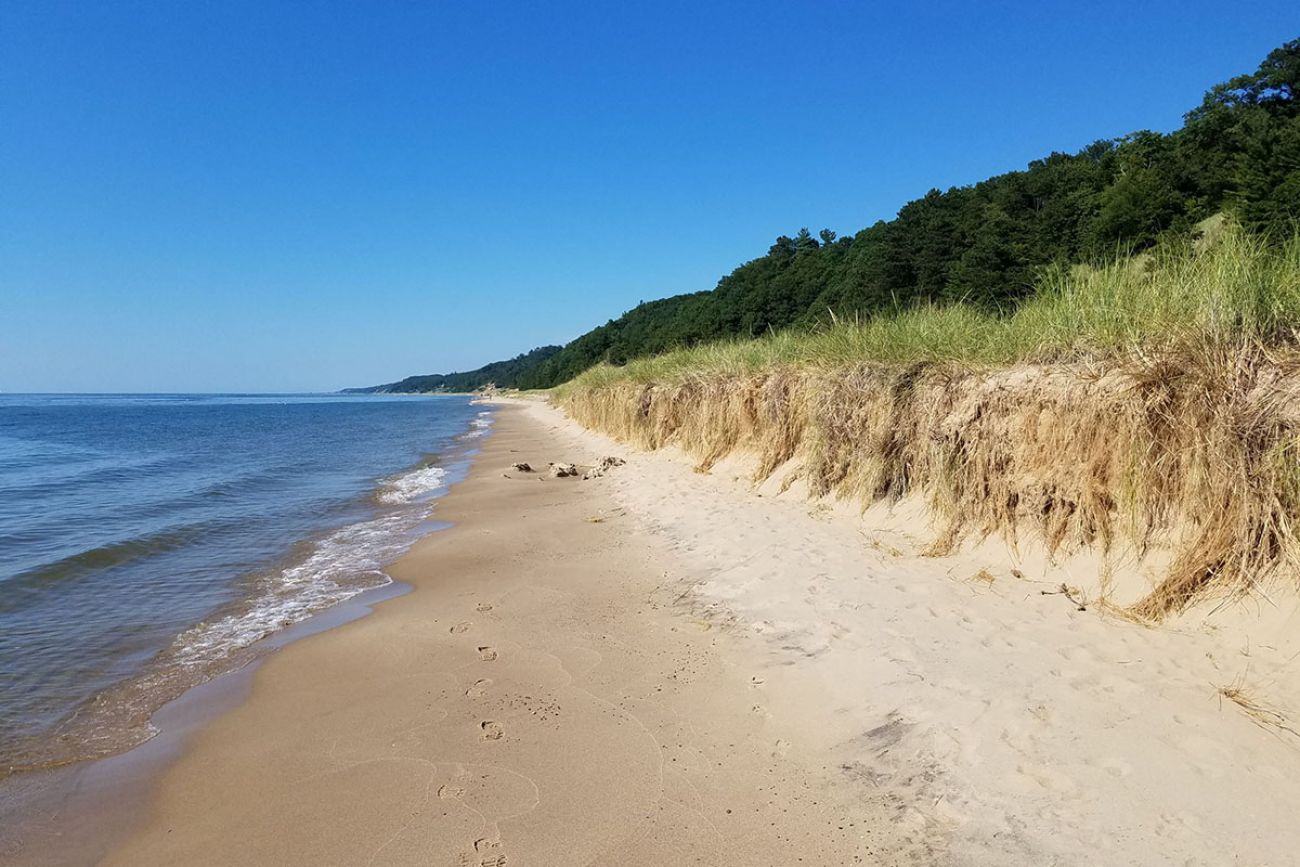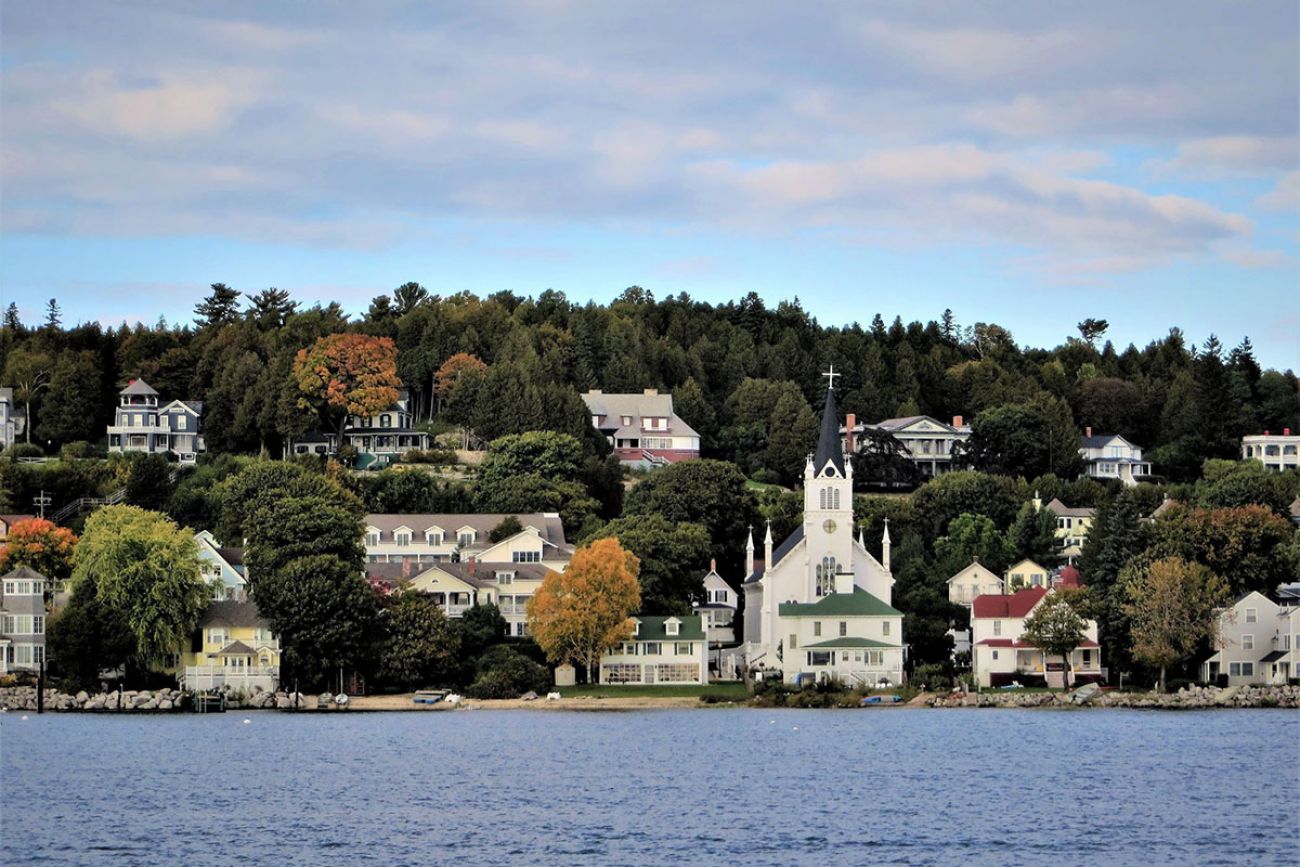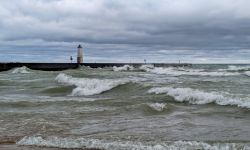Report aims to prepare Great Lakes states for effects of climate change

- A plan by the Great Lakes Commission spells out how the region can prepare for climate change
- Progress is hindered by differing state-by-state approaches to a shared threat
- Upcoming meetings and conferences aim to bring states together to find shared solutions
Climate change contributed to the rapid rise in Great Lakes water levels a few years ago. Combined with more frequent and intense storms –also caused by climate change- they caused record flooding in 2017 and 2019 in some parts of the Great Lakes region. Homes and property were damaged.
The federal government is pretty quick in getting aid to states along the Atlantic Gulf coasts when a hurricane hits. But when your damage is slow motion –as it was with high water levels of the lakes- you don’t get quite the same attention.
Here’s a small example. The recent Great Lakes high water levels washed out some roads and culverts during big storms. The Federal Emergency Management Agency did show up, but its recovery efforts didn’t take into account that climate change means infrastructure has to be more resilient.

Related:
- Lakes Michigan and Huron join list of lakes with PFAS-tainted smelt
- Armed with flea meds, Michigan defends hemlock trees against deadly invader
- With growing backlash to wind energy, Michigan turns to solar power
“In some cases FEMA will not pay for a bigger culvert. So, they put in the same size culvert only to have it get blown out again,” said Peter Annin, author of the book The Great Lakes Water Wars.
So, the Great Lakes Commission (GLC) has issued a plan to better prepare the Great Lakes basin for a changing climate.
Don’t feel bad if you’re not sure what the Great Lakes Commission is. With the alphabet soup of Great Lakes groups, GLC doesn’t necessarily stand out.
But the Great Lakes Commission is unique. It was created to represent the interests of the eight states and two Canadian provinces that surround the Great Lakes.
It released a 14 page “Action Plan for a Resilient Great Lakes Basin.”
Erika Jensen, Executive Director of the GLC, said government officials from the states and provinces along with other partners worked on the plan.
“A key outcome was getting the states and provinces and our partners to agree on a common definition for resilience.”
This article is part of The Great Lakes News Collaborative, which includes Bridge Michigan, Circle of Blue, Great Lakes Now at Detroit Public Television, and Michigan Radio. It unites newsroom resources to report on the most pressing threats to the Great Lakes and drinking water supplies, including pollution, climate change, and aging infrastructure. The independent journalism is supported by the Charles Stewart Mott Foundation.
And that definition basically boils down to making sure the Great Lakes region’s communities, infrastructure, ecosystems, and economy can withstand, adapt to, and recover from the difficulties that a changing climate might cause -all in an equitable fashion.
The plan outlines goals and the hoped-for outcomes.
Beyond that, it gets sticky. You see, the Great Lakes Commission can only point the way.
The states and provinces all have their own plans about what to do about climate change within their borders. But, the lakes don’t recognize state borders.
The GLC plan suggests they’ll have to work together, learn from each other, and prepare the entire basin.
The Great Lakes Commission’s planning document is also trying to reach another audience.
“They’re always kind of secondarily looking at the federal government and trying to shine a light on the region as an important region to keep focused in these areas,” said James Clift, Deputy Director at Michigan’s Department of Environment, Great Lakes, and Energy. He represents Michigan on the GLC’s Board of Directors
That’s important because a lot of money to make the Great Lakes basin more resilient will come from Washington.
Laura Rubin, director of the advocacy group Healing Our Waters – Great Lakes Coalition, said when it comes to the Great Lakes, politicians from different parties can work together.
“Right now, we have very strong governors throughout the Great Lakes region, very strong governors that are advocates for the Great Lakes. And that's Republican and Democrat.”
That means if the Great Lakes Commission can get the states to agree on how to make the basin climate change resilient, together they have a lot of political clout in Washington to lobby for the money to pay for some of the cost.
The issues are not simple. When it comes to what to do about making the Great Lakes coasts more resilient, there are no quick and easy answers.
For example, some groups want to harden the coasts by building concrete structures to protect businesses, buildings, and homes. Others want to soften the coasts, restoring wetland habitat, putting parks and greenways along the coasts, things that can survive occasional flooding. They also want to require increased setbacks for buildings to keep them out of possible flood zones.

It’s all controversial. It will likely end up being some combination of hardening and softening the coasts. But it’s just one of the many issues the “Action Plan for Resilient Great Lakes Basin” notes needs work.
The GLC will schedule multiple meetings and conferences to bring everyone together to work out the specifics.
“In terms of information sharing, providing resources, and also tracking our progress towards creating a more resilient Great Lakes basin,” said Jensen.
Then, it’s about nudging states to do better. Rubin with Healing Our Waters said some states need more nudging than others.
“Some of the states like Indiana and Ohio, that sometimes lag behind on other climate things. We're hoping that this pushes them more in that direction.”
The Action Plan for a Resilient Great Lakes Basin offers the region a map. Now it’s up to the individual states and provinces to decide what route they’re going to take together. It will still be a bumpy ride.
Michigan Environment Watch
Michigan Environment Watch examines how public policy, industry, and other factors interact with the state’s trove of natural resources.
- See full coverage
- Subscribe
- Share tips and questions with Bridge environment reporter Kelly House
Michigan Environment Watch is made possible by generous financial support from:
Our generous Environment Watch underwriters encourage Bridge Michigan readers to also support civic journalism by becoming Bridge members. Please consider joining today.
See what new members are saying about why they donated to Bridge Michigan:
- “In order for this information to be accurate and unbiased it must be underwritten by its readers, not by special interests.” - Larry S.
- “Not many other media sources report on the topics Bridge does.” - Susan B.
- “Your journalism is outstanding and rare these days.” - Mark S.
If you want to ensure the future of nonpartisan, nonprofit Michigan journalism, please become a member today. You, too, will be asked why you donated and maybe we'll feature your quote next time!






